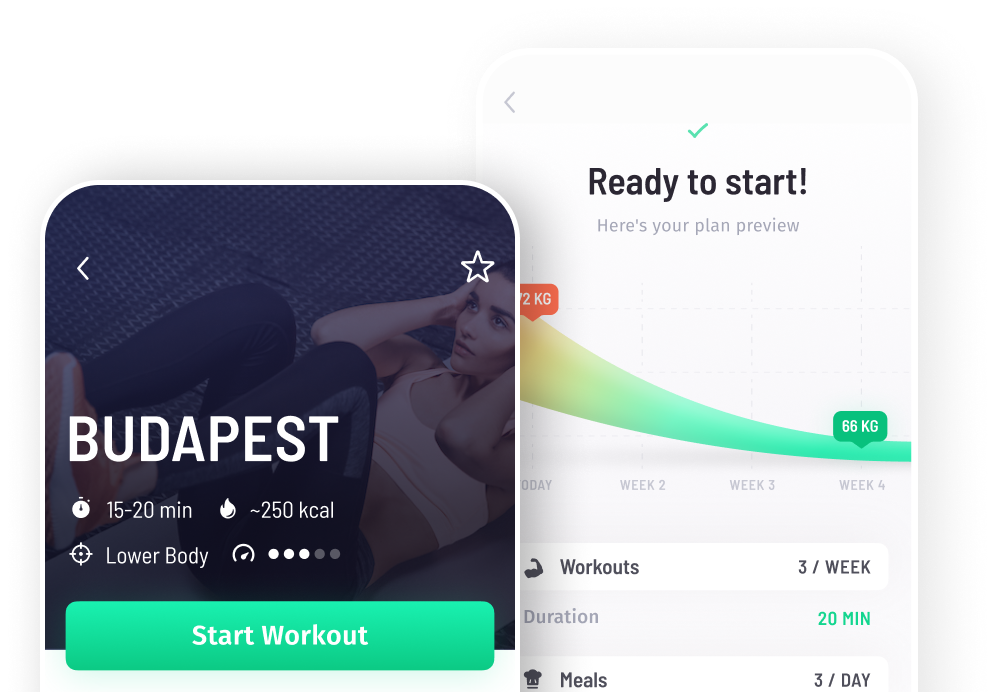If you are trying to lose weight, you are most likely increasing your exercise quota and including more cardiovascular exercise. You may have heard of the cardio 'fat-burning zone,' which is moderate-intensity cardio working at 50-75% of your MHR (Maximal Heart Rate).
This is often touted as the 'holy grail' of fat loss exercise; however, some fitness experts would disagree. Let's look at the cardio for fat loss facts and myths, and some great cardio workouts to lose weight.
Low-Intensity vs. High-Intensity Cardio for Fat Loss
Low to moderate intensity cardio working in that 50-75% MHR range is a popular choice of exercise for people trying to lose weight. This is because when you are exercising aerobically at 50-75% of your MHR, your body will draw on fat stores as fuel. Therefore, it does appear to burn more fat, at least in the short term. But what are the long-term effects when compared to high-intensity cardio?
Aerobic exercise performed at a high-intensity (75-85% of MHR) burns more calories overall than moderate-intensity exercise. Therefore, if you are working out regularly, then you will end up burning more fat calories doing high-intensity cardio because you will be burning more total calories, which will, of course, include fat calories. Burning more calories means more significant total fat loss as you will not only burn more fat overall, but you will also be in a higher calorie deficit. Use more calories than you consume, and you will lose weight.
Having said that, low to medium intensity aerobic exercise does still have value. As it's more gentle, it is perfect for those who are very overweight or unfit. It also allows you to work out longer and burns fat specifically as opposed to total calories. It also strengthens bones and joints.
High-intensity cardio also has unique benefits. The increase in metabolic rate from your exercise session will last for a longer period of time after the workout. Your muscles will strengthen faster, and you will build endurance and stamina. You will burn a higher number of total calories, which, if you exercise regularly, will result in more significant weight loss.
Effective Cardio Workouts to Lose Weight
Firstly, it is crucial to ascertain your own personal MHR. You can do this by subtracting your age from 220. You now have your upper heart rate limit.
You can choose any type of cardio that you enjoy. Running or jogging, cycling, rowing, elliptical, dancing, and swimming are all great choices. To work in the high-intensity zone, you simply need to ensure that you are performing at 75-85% of your MHR.
If this feels too advanced for you right now, there's no need to worry. Start with low to medium intensity cardio, working at 50-75% of your MHR. You can increase your intensity as you become fitter and stronger.
HIIT Workouts for Fat Loss
One of the best forms of cardio for fat loss is HIIT (high-intensity interval training). This is not for the beginner, the obese, or very unfit because you are working at high to very high intensity (75-80% rising to 90%) of your MHR.
To do a HIIT workout, choose your cardio method. Exercise until you have reached 75-80% of your MHR for two minutes. Then, increase your speed until you reach 90% for 30 seconds. Drop back to 75-80% for two minutes and repeat this cycle for up to 30 minutes. Add a HIIT workout such as this to your routine a few times a week, and you will soon see the fat melting away and your cardiovascular fitness levels improving.
Did you enjoy this article? Share it!

